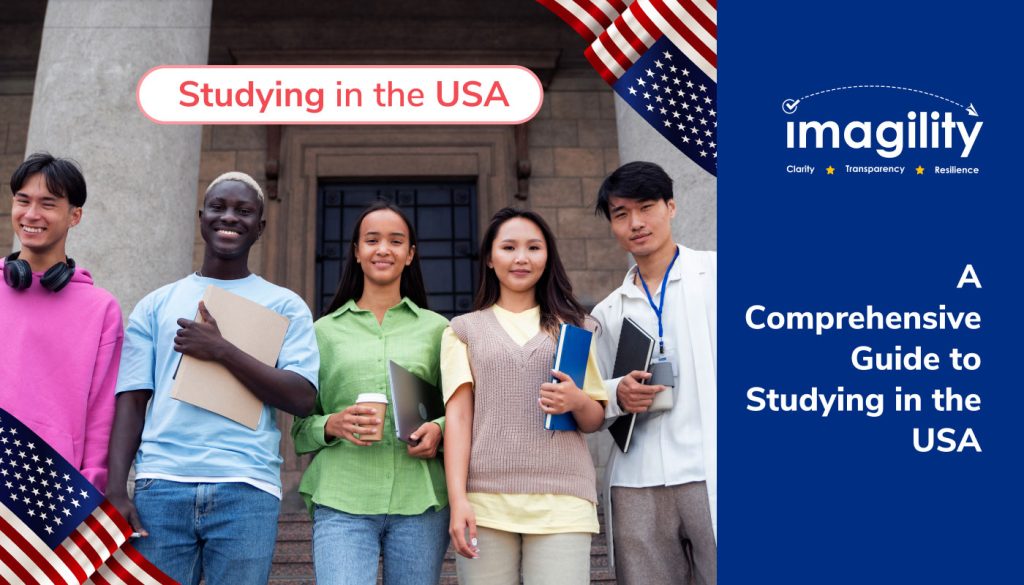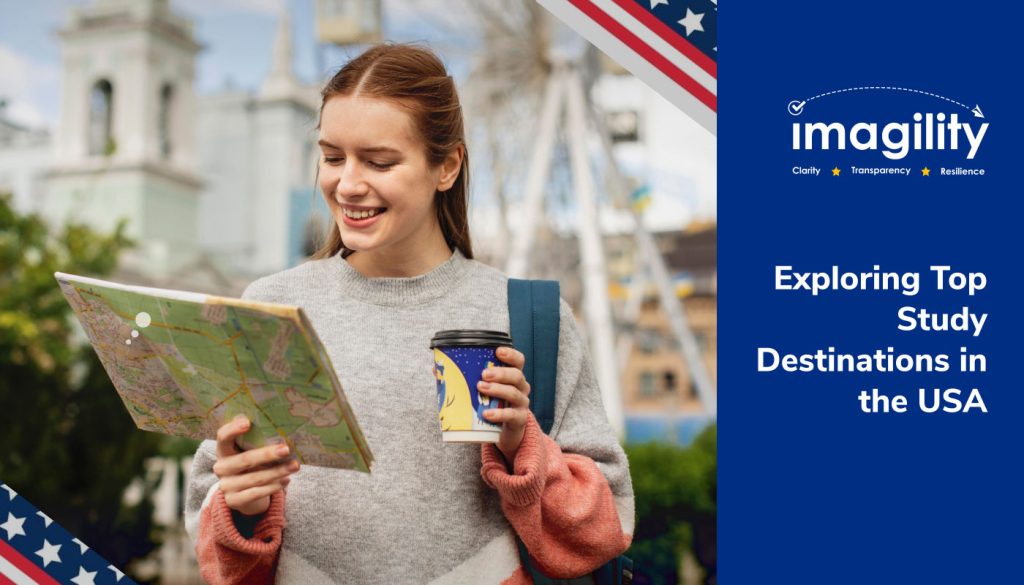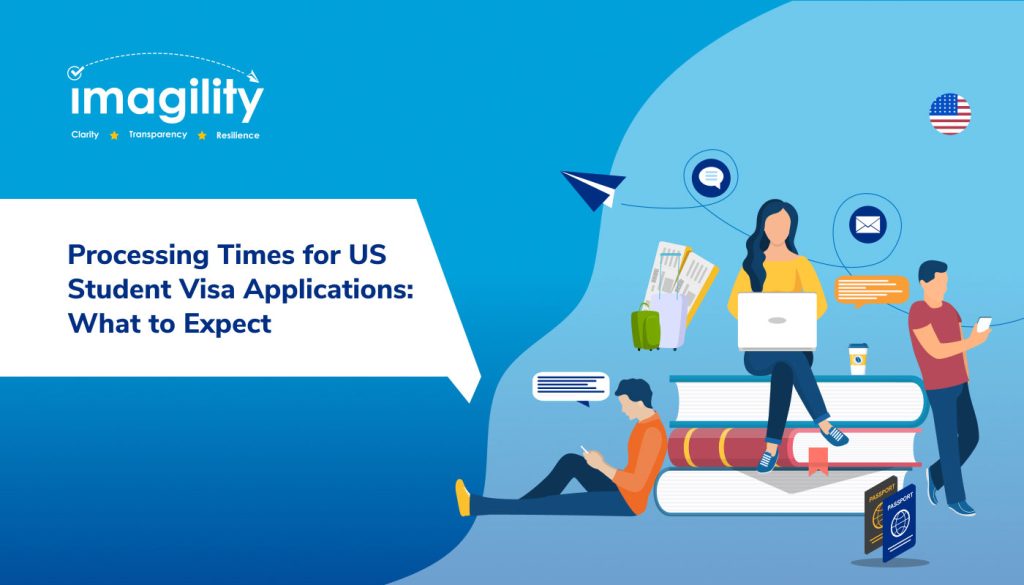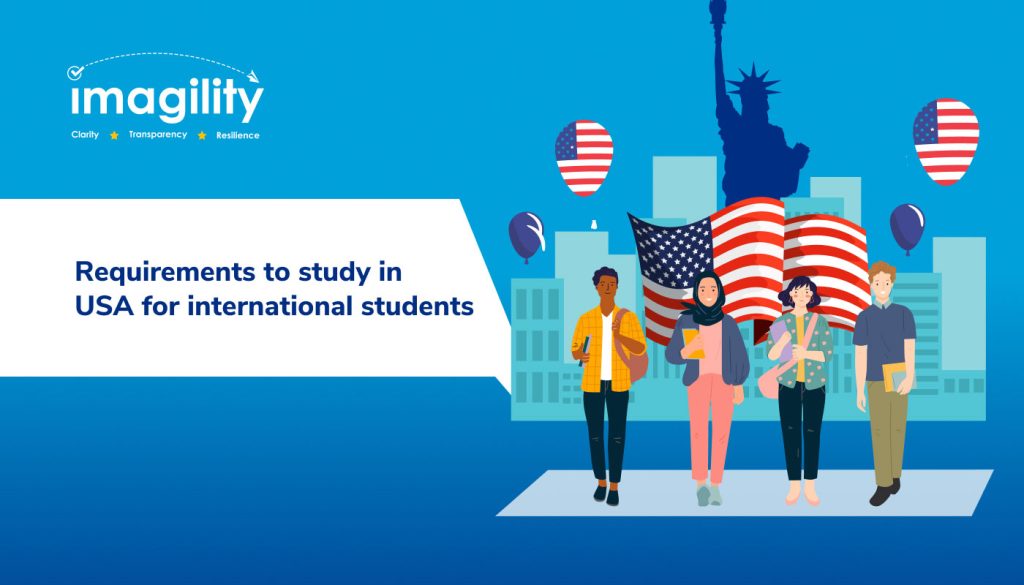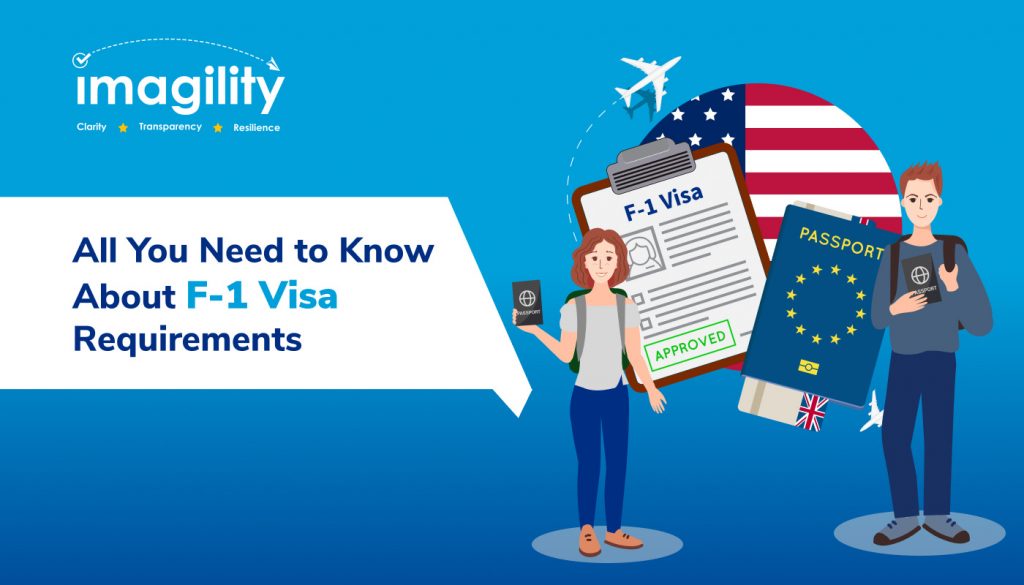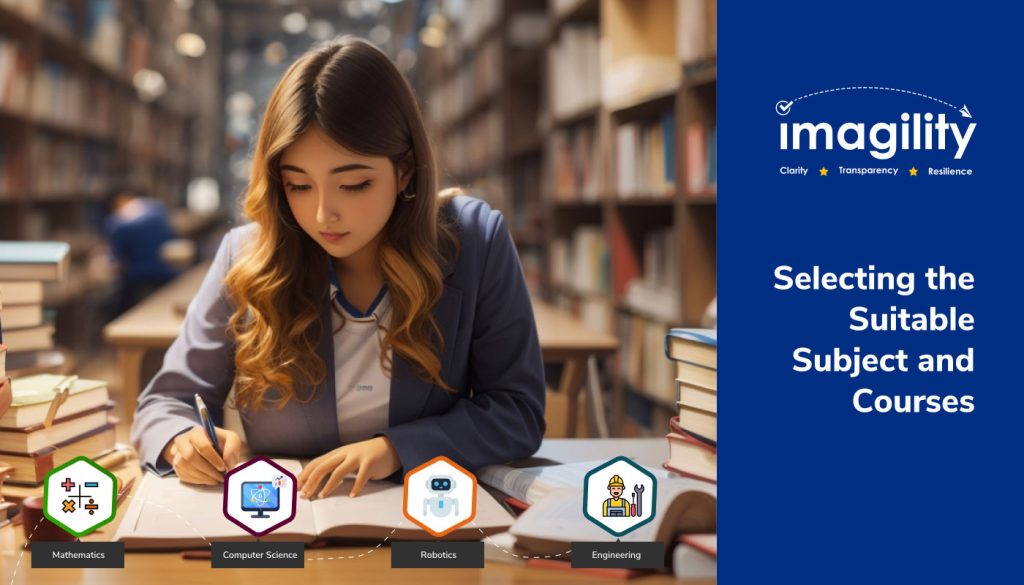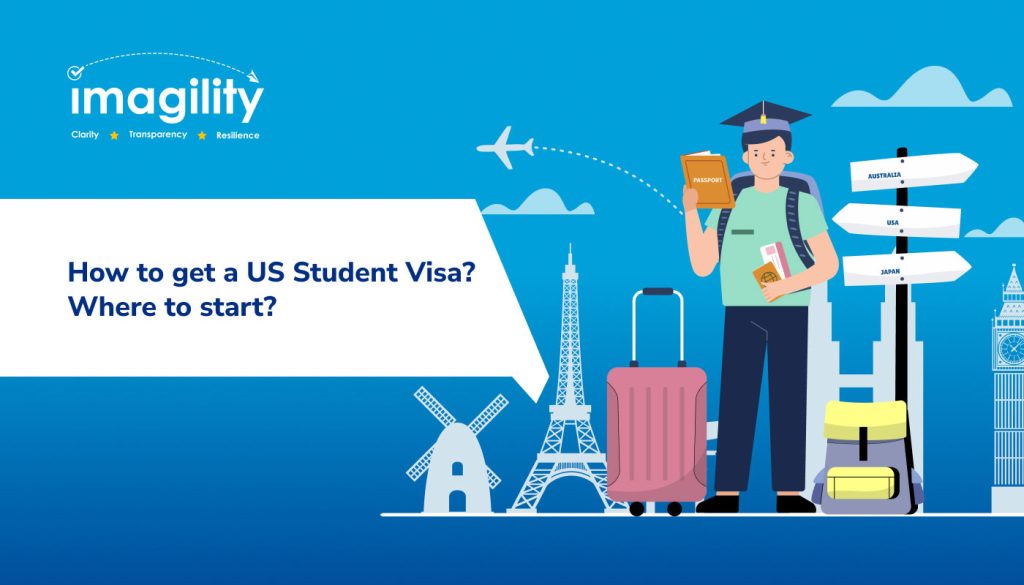Exploring education opportunities abroad can be an exciting but intricate process for international students. Navigating university selections, visa applications, and handling the competition for popular destinations can be challenging. However, the benefits of studying in the US outweigh the hurdles. This comprehensive guide aims to simplify the experience, shedding light on what it means to study in the USA.
Covering accommodation, living expenses, transportation, and fascinating insights about popular cities and colleges, this guide is tailored to aid your journey to study in the US. As the USA remains a top preference for global students, discover insights about its education system, renowned courses, top-tier universities, and available scholarships in this comprehensive blog, your ultimate resource for studying abroad in the USA.
1. Introduction to Studying in the USA
The United States is a world leader in education, attracting a large number of international students each year. Its academic infrastructure, research facilities, and renowned faculty members are highly appealing to those seeking a comprehensive educational experience. The USA’s dedication to innovation and academic excellence resonates with students all over the world. Studying in the United States provides more than just academic benefits; it is also a chance to immerse oneself in a diverse range of cultures and lifestyles. Outside of the classroom, students will come into contact with varied communities, linguistic variations, and a variety of customs. This multifaceted exposure not only enhances academic pursuits, but also personal development and global perspectives.
2. Choosing the USA as Your Study Destination
Choosing the United States as your educational destination opens a world of opportunities within its academic framework. The United States is well-known for its diverse and esteemed education system, offering a multifaceted learning environment. From Ivy League schools to state universities, each institution has a distinct identity, giving students a rich educational experience. What sets these universities apart is their emphasis on practical learning, cutting-edge research, and interdisciplinary studies, making them popular destinations for higher education. The academic landscape in the USA offers a wide range of programs, access to top-tier facilities, and interactions with industry leaders, fostering an environment that promotes holistic development and prepares students for dynamic careers on a global level.
Most of all, the USA is home to the world’s largest population of international students. This culturally inclusive and vibrant country welcomes students from across the globe and the universities make sure that the students have a smooth academic experience in the USA. American universities are well-known for the quality of education they offer. They have excellent degree programs and most of the universities in the US are globally recognized.
3. Cultural and Lifestyle Experience
As you might already have known, studying in the USA isn’t just about academics; it’s an adventure that takes you to the heart of American culture. It’s about savoring diverse foods, joining local celebrations, and embracing various regional languages. This wonderful journey will expand horizons and nurture a deep respect for different cultures. The United States is a melting pot of lifestyles, from lively cityscapes to serene rural areas. Every state and city has its own distinct appeal, from the fast-paced lifestyle of New York City to the laid-back atmosphere of California. Students are immersed in a tapestry of cultures, traditions, and opportunities for both personal and academic growth.
So, make sure you don’t just pack your bags with textbooks, but also pack an open mind and a curious heart. The USA is waiting to weave a one-of-a-kind chapter in your story, filled with adventure, growth, and an unforgettable cultural immersion experience.
4. Navigating the Education System
The U.S. education system provides a variety of academic levels to accommodate diverse educational goals. From associate degrees to doctoral programs, students can map out their educational journey based on their interests and career objectives. Exploring these levels can help clarify one’s educational path.
A range of institution types exist in US universities, including public, private, research-focused, and liberal arts colleges. Each type offers distinct educational philosophies and specialized programs. Understanding these distinctions can help students select institutions that align with their academic goals.
The following are the different categories of universities in the USA.
- IVY League
- Public Ivies
- Liberal arts philosophy
- Specialist institutions
- Land grant colleges and universities
- Research intensive institutions
5. Admission and Application Procedures
Applying to US universities involves a strategic approach. It is essential to be familiar with the application timelines, requirements, and processes for different intakes—fall, spring, or summer. Highlighting essential documents and crafting a compelling application will strengthen your chances of gaining admission to your desired institutions.
Related Resource
Download the Imagility Student Visa app to learn about application timelines and the entire application process.
6. Understanding Academic Tests and Preparatory Programs
International students who wish to study in the United States must take a variety of standardized admissions tests, including the TOEFL, GRE, and SAT. These assessments evaluate different skills, including language proficiency, academic readiness, and subject-specific knowledge. It is essential to understand the format, scoring, and preparation strategies for these tests in order to be successful in the admissions process.
Many universities and colleges mandate that undergraduate and graduate applicants take standardized admission and English proficiency tests to study in the USA. Some of these tests include:
- International English Language Testing System (IELTS)
- Test of English as a Foreign Language (TOEFL)
- Scholastic Assessment Test (SAT) for Undergraduate Students
- Law School Admission Testing Program (LSAT)
- Medical College Admission Test (MCAT) for Undergraduate Students
- Pearson Test of English Academic (PTE)
Pathway programs, also known as bridge courses, serve as preparatory programs guiding international students in the USA toward bachelor’s or master’s degree programs in US universities. These preparatory courses provide language training, academic skill development, and cultural assimilation. They offer international students a foundational understanding that is essential for adapting to the rigorous academic standards of US institutions.
7. Financial Planning and Scholarships
In order to effectively navigate the financial aspect of studying in the USA, it is crucial for the students to have a comprehensive understanding of all expenses. These include tuition fees, accommodation costs, living expenses, books, and health insurance. Estimating these expenses will help create an effective financial plan.
Studying in the USA can seem expensive but remember, there are many scholarships and financial aid options available for international students. These scholarships can help to alleviate the financial burden by providing support for tuition fees, living expenses, or both. It is important to understand the eligibility criteria and application procedures for these scholarships in order to take advantage of them.
8. Student Visa Application and Health Insurance
The US offers various student visas such as F visa, M visa, and J visa. Each category has specific requirements and restrictions. Understanding the nuances of these visas is crucial for successful application and enrollment in US institutions. The kind of student visa you will need to apply for depends on both your age and your intended activities within the country. Let’s explore the three primary categories of USA student visas and their corresponding conditions:
- F-1 Visa: This is the most prevalent visa for international students pursuing academic studies in the USA.
- M-1 Visa: Designed for students enrolled in vocational or technical courses.
- J-1 Visa: Applied for by international students engaged in exchange programs.
To kick start their journey to study in the USA, international students need to apply to a US college or university accredited by the Student Exchange Visitor Program (SEVP). Upon paying the SEVIS fee, the institute’s international student office will dispatch a Form I-20 after acceptance. This form, issued by the admitting university, is crucial for acquiring a USA student visa. During the visa interview at the US embassy and upon arrival at a US port of entry, students must present this paperwork.
Ready to elevate your USA study experience?
Install Imagility’s Student App now for seamless support
Health Insurance
Health insurance is essential for international students in the USA, yet policies can be complex. It’s crucial for students to carefully review policy coverage, disclose any pre-existing conditions before starting studies, and check for any additional co-payments. Many universities offer comprehensive health insurance plans, while others require students to obtain their own coverage. You can check with your university to understand more about the health insurance plans they offer.
Purchasing health insurance before arriving in the United States is highly recommended for international students. Certain US universities provide their health insurance plans covering various services like medical, counseling, prescription, vision, and dental care. On average, these plans can cost around $1,800 to $2,900 per semester for undergraduate and graduate students, respectively.
9. Cost of Studying and Living in the USA
To plan your finances, it is mandatory to estimate the cost of studying in the USA and living here. Tuition fees vary across institutions and programs. Additionally, accommodation, meals, transportation, books, and personal expenses contribute to the overall cost.
Managing finances while studying in the USA requires effective budgeting. Adopting cost-saving measures, exploring part-time work opportunities, and seeking campus resources can all help to improve financial management.
How much does it cost to study in the USA?
The cost of studying in the USA can vary significantly based on factors like the institution, location, program duration, and lifestyle choices. On average, tuition fees for international students can range from $20,000 to $40,000 per year for undergraduate programs and higher for some specialized degrees or prestigious universities. Additional expenses like accommodation, food, transportation, and health insurance can amount to around $10,000 to $15,000 annually. These figures are estimates and can significantly differ based on individual circumstances and choices.
Download Imagility’s Free Student App to learn more
10. Scholarships to Study in the USA
Scholarships play a pivotal role in making higher education in the USA more accessible for international students. Over the years, the country has actively provided financial aid to reduce the cost of education and support students pursuing their studies. The rise in international student enrollment in the USA, reflects the growing popularity and competitiveness of American universities. These scholarships are designed to alleviate the financial burden of tuition fees, making it feasible for students to pursue their academic aspirations in the USA. Below are some common types of scholarships available for international students studying in the USA.
- Merit-Based Scholarships: Awarded based on academic achievements, talents, or specific skills demonstrated by the student.
- Need-Based Scholarships: Offered to students with demonstrated financial need. These scholarships aim to bridge the gap between the cost of education and a student’s ability to pay.
- Athletic Scholarships: Granted to students with exceptional sports abilities. These scholarships often cover tuition fees, and in some cases, accommodation and other expenses.
- Subject-Specific Scholarships: Provided to students studying particular fields or disciplines. These can include scholarships for STEM (Science, Technology, Engineering, Mathematics), arts, humanities, and more.
- Diversity Scholarships: Aimed at supporting students from underrepresented or marginalized communities, promoting diversity and inclusion in education.
- Country-Specific Scholarships: Offered by governments or institutions in the USA to students from specific countries, encouraging international exchange and collaboration.
- Program-Specific Scholarships: Tied to particular academic programs, courses, or research projects, assisting students pursuing those specific avenues of study.
- Organization/Institution Scholarships: Offered by various organizations, non-profits, or institutions, including private companies, foundations, or educational bodies.
11. Popular Cities and Destination Highlights
The USA boasts numerous cities catering to international students. Destinations like Boston, New York, San Francisco, and others offer diverse experiences, cultural vibrancy, and academic excellence. Each city provides unique opportunities for education, recreation, and career growth.
Beyond academics, these cities offer captivating landmarks, cultural experiences, and historical significance. Trivia about these destinations, from iconic landmarks to cultural festivals, adds a layer of fascination to the overall study experience in the USA.
12. Top bachelor’s courses you might want to study in the USA
US universities offer both four-year undergraduate programs and two-year undergraduate programs. The Associate of Arts (A.A.) degree and the Associate of Science (A.S.) degree are indeed examples of two-year programs commonly offered by many colleges. These programs typically prepare students for further studies or for transferring into four-year degree programs.
- Engineering & Computer Science (Data Sciences, Aerospace Engineering, Chemical Engineering, Civil Engineering, Computer Engineering, Software Engineering, Cyber Security, Information Technology, Environmental Engineering, Health Informatics Technology, Robotics, etc)
- Life Sciences (Health Sciences, Pharmaceutical Sciences, Environmental Sciences, Biotechnology, etc.)
- Business management (Bachelor of Business Administration and International Business)
- Psychology (Clinical Psychology, Cognitive Psychology, Forensic Psychology, etc)
- Communication & Journalism (Mass Communication, Advertising, Film Studies, Media Production, Broadcast Journalism, Multimedia Journalism, Digital Media, etc.)
- Social Science & Humanities (Sociology, Economics, History, Geography, Political Science, Linguistics, Cultural Studies, etc.)
Take your student visa journey to the next level with Imagility's App!
13. Intakes in the USA
In the USA, there are three primary intakes: Spring, Summer, and Fall. Spring intake commences in January, Summer in May, and Fall intake begins in September.
The fall intake, occurring in September, stands as the predominant admission period in the USA, attracting a significant number of admissions annually. September intake offers an extensive array of course selections and university options, making it an ideal choice for many applicants. No matter which intake you choose, commencing your application process at least a year beforehand increases your likelihood of securing admission.
Intakes in USA | Duration | Applications open |
September Intake/Fall Intake | September- December | November- May |
January Intake/Spring Intake | January- April | July- December |
May Intake/Summer Intake | May-August | January- March |
14. Post-Study Opportunities and Work Rights
Upon completing their studies, international students in the USA can explore diverse employment opportunities. Options like Optional Practical Training (OPT) and STEM OPT extensions allow graduates to gain practical experience in their field of study. In the same way, participating in internships, co-op programs, and networking events during studies improves the chances of securing future employment. It is crucial to understand work rights, visa extensions, and employment regulations to ensure a seamless transition into the workforce.
15. Helpful Checklists
a. Checklist of documents needed for your application to study in the USA
- Passport: Valid passport with at least six months of validity.
- Visa Application Form: Completed and signed visa application forms.
- Admission Letter: Offer of admission from a US institution (I-20 for F-1 visa or DS-2019 for J-1 visa).
- Standardized Test Scores: Such as TOEFL, IELTS, GRE, GMAT, SAT, etc.
- Academic Transcripts: Official transcripts from previous educational institutions.
- Financial Documents: Proof of financial support to cover tuition and living expenses.
- Recommendation Letters: Academic or professional reference letters.
- Statement of Purpose: Essay detailing your academic objectives and motivations.
- Resume/CV: Documenting academic achievements and extracurricular activities.
- Health Insurance: Proof of health insurance coverage.
- Passport-sized Photos: Recent photographs meeting specific requirements.
b. Checklist for USA Student Visa Documentation
- To apply for USA student visas, you’ll need the following documents:
- A passport valid for at least 6 months from your entry date into the United States.
- Recent passport-sized photograph with a white background (50mm x 50mm)
- DS-160 confirmation page with barcode
- Receipts confirming payment of the US Visa application fee
- SEVIS receipt and I-20
- Financial documentation
- Sponsor details and relevant supporting documents

